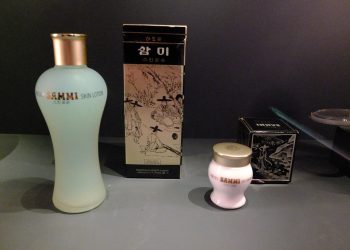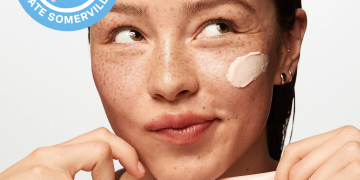Rosacea is a chronic skin condition characterized by persistent redness, visible blood vessels, and sometimes acne-like bumps. For those who live with rosacea, finding effective ways to manage the condition can significantly improve skin health and overall confidence. The key to managing rosacea lies in a gentle skincare routine tailored to soothe and protect sensitive skin while minimizing triggers that exacerbate symptoms. This guide explores the causes of rosacea, common triggers, and a step-by-step skincare approach to help you take control of this challenging condition.
Understanding Rosacea
Rosacea affects millions of people worldwide and tends to manifest as redness on the cheeks, nose, forehead, and chin. While its exact cause is unknown, several factors contribute to its development:
- Genetic Predisposition: Rosacea often runs in families.
- Abnormal Immune Response: Some research suggests rosacea may involve an overactive immune system.
- Environmental Factors: Sun exposure, wind, and extreme temperatures can irritate sensitive skin.
- Demodex Mites: These naturally occurring skin mites may play a role in some cases of rosacea.
Symptoms of rosacea include:
- Persistent facial redness.
- Visible blood vessels.
- Small, red bumps or pustules.
- Burning or stinging sensations.
- Thickened skin in advanced cases.
Identifying Triggers
Rosacea triggers vary from person to person. Keeping a journal of flare-ups can help you identify specific culprits. Common triggers include:
- Hot Weather: Heat and humidity can cause skin to flush.
- Sun Exposure: UV rays are a leading cause of rosacea flare-ups.
- Spicy Foods and Alcohol: Both can dilate blood vessels and intensify redness.
- Stress: Emotional stress can worsen symptoms.
- Skincare Products: Harsh ingredients or over-exfoliation can irritate sensitive skin.
Building a Gentle Skincare Routine for Rosacea
A rosacea-friendly skincare routine focuses on calming and protecting the skin while minimizing irritation. Here’s a step-by-step guide:
1. Cleanse with Care
Cleansing removes dirt and impurities, but harsh cleansers can strip the skin of its natural oils, worsening redness and irritation.
- Choose a Gentle Cleanser: Look for fragrance-free, sulfate-free options with soothing ingredients like aloe vera or chamomile.
- Use Lukewarm Water: Avoid hot water, which can trigger flushing.
- Pat Dry: Gently pat your face dry with a soft towel rather than rubbing.
2. Hydrate with a Soothing Moisturizer
Moisturizing is essential for maintaining the skin’s barrier and preventing dryness.
- Look for Barrier-Repairing Ingredients: Ceramides, hyaluronic acid, and squalane help lock in moisture.
- Avoid Potential Irritants: Fragrance, alcohol, and heavy oils may aggravate rosacea.
- Apply Twice Daily: Moisturize morning and night to keep skin hydrated.
3. Protect with Sunscreen
Sun exposure is one of the most common rosacea triggers. Daily sunscreen application is crucial for preventing flare-ups.
- Choose a Mineral Sunscreen: Look for products containing zinc oxide or titanium dioxide, which are less likely to irritate sensitive skin.
- Opt for SPF 30 or Higher: Ensure broad-spectrum protection against UVA and UVB rays.
- Reapply as Needed: Especially if you’re outdoors for extended periods.
4. Incorporate Calming Treatments
Targeted treatments can help reduce redness and soothe inflammation.
- Niacinamide: Reduces redness and strengthens the skin barrier.
- Azelaic Acid: Addresses acne-like bumps and reduces inflammation.
- Green Tea Extract: Provides antioxidant protection and calms sensitive skin.
- Licorice Root Extract: Brightens and diminishes redness.
Introduce new treatments gradually to monitor your skin’s response.
5. Avoid Over-Exfoliating
While exfoliation is essential for healthy skin, overdoing it can damage the delicate barrier of rosacea-prone skin.
- Use Enzyme-Based Exfoliants: Gentle enzymatic exfoliants derived from fruits like papaya or pineapple are less abrasive.
- Limit Frequency: Exfoliate no more than once a week.
Lifestyle Adjustments to Manage Rosacea
In addition to a skincare routine, certain lifestyle changes can help manage rosacea:
1. Reduce Stress
Stress is a significant trigger for many people with rosacea. Incorporate relaxation techniques such as:
- Meditation or yoga.
- Deep breathing exercises.
- Regular physical activity.
2. Watch Your Diet
Certain foods and beverages can exacerbate rosacea. Avoid or limit:
- Spicy dishes.
- Alcohol, especially red wine.
- Hot beverages like coffee and tea.
Instead, focus on anti-inflammatory foods such as leafy greens, fatty fish, and berries.
3. Use a Humidifier
Dry indoor air can worsen rosacea symptoms, especially in winter. A humidifier helps maintain skin hydration and prevent flare-ups.
4. Protect Against Extreme Temperatures
Cold winds and hot weather can both trigger symptoms. Use scarves or wide-brimmed hats to shield your face, and seek shade whenever possible.
Professional Treatments for Rosacea
For severe or persistent rosacea, professional treatments can provide relief:
1. Laser and Light Therapy
- Pulsed Dye Lasers (PDL): Target visible blood vessels to reduce redness.
- Intense Pulsed Light (IPL): Improves overall skin tone and diminishes discoloration.
2. Prescription Medications
- Topical Treatments: Metronidazole or ivermectin can reduce inflammation and redness.
- Oral Antibiotics: Doxycycline may be prescribed for moderate to severe rosacea.
- Beta-Blockers or Clonidine: Help manage flushing in some cases.
3. Microneedling
This minimally invasive procedure stimulates collagen production and can help improve skin texture, though it should be done under professional guidance for rosacea-prone skin.
Common Myths About Rosacea
1. “Rosacea Only Affects Fair Skin.”
Rosacea can affect all skin tones, though it may be less noticeable in darker complexions.
2. “Rosacea is Caused by Poor Hygiene.”
Rosacea is not related to cleanliness and cannot be cured by washing more frequently.
3. “You Can’t Use Makeup with Rosacea.”
With the right products, you can wear makeup. Opt for non-comedogenic, fragrance-free options, and use green-tinted primers to neutralize redness.
The Importance of Patience and Consistency
Managing rosacea requires a gentle, patient approach. Consistency in your skincare routine, combined with lifestyle adjustments, can significantly improve symptoms and enhance your skin’s overall health. By understanding your triggers and choosing products wisely, you can take control of rosacea and enjoy a calmer, more confident complexion.










